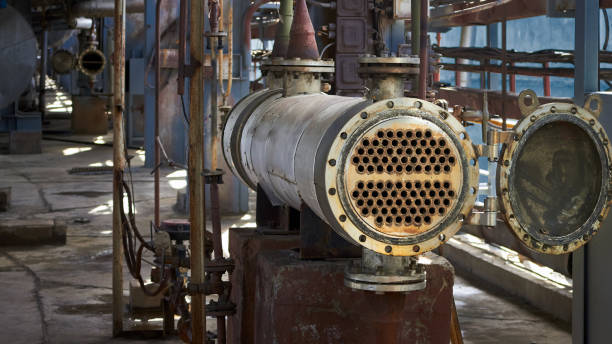Heat exchangers are essential components of any industrial or commercial setting. They transfer heat from one fluid to another, and many processes would only be possible with them. That said, heat exchangers can also be dangerous if not properly cleaned. This blog post will discuss the various safety considerations while cleaning a heat transfer equipment and provide tips on how to clean it safely.
Cleaning Heat Exchanger
When it comes to cleaning heat exchangers, various safety considerations must be taken into account. For instance, using a properly fitted respirator when using harsh chemicals can protect against exposure to harmful fumes. Additionally, proper surface preparation and wear of protective gloves and eyeglasses are essential. Finally, always keep a safe distance from the heat exchanger. Because while working, you may getting burned.
What is a Heat Exchanger?
A heat exchanger is a device that transfers thermal energy from one medium to another. They are useful in industrial plants, homes, and automobiles. Heat exchangers are useful in reducing the temperature of hot fluids and air or to increase the temperature of cold liquids. There are two common types of heat exchangers: counterflow and co-flow.
The Importance of Cleaning
The importance of cleaning a heat exchanger cannot be overstated. Not only does it protect the system itself, but also the people and property within range of its exhaust. There are several ways to clean a heat exchanger:
- Mechanical cleaning – This method uses a brush or mechanism to dislodge dirt and debris from the exchanger’s surface. It is effective for small areas but can be time-consuming and require special tools.
- Chemical cleaning – This approach uses an agent to break down organic material on the exchanger’s surface. Because this process is chemical, it can be more aggressive and require regular attention.
- Electrical cleaning – This approach uses an electric current to remove dirt and grime from the exchanger’s surface. It is fast and efficient but requires access to electricity and special equipment.
Cleaning a heat exchanger is an important task which is done regularly to keep the system in good condition.
Other Safety Considerations
When cleaning the heat exchanger, be aware of the following safety considerations:
- Do not use water that is too hot or too cold. The exchanger can become damaged if the water is too hot or cold. Use warm water that is just uncomfortable to the touch.
- Wear protective gear, including gloves, a face mask, and eye protection. The exchanger can contain sharp edges and small particles that can cause injury.
- Do not spray water directly into the heat exchanger; use a hose instead. This will help prevent debris from entering the heat exchanger and causing damage.
Conclusion
In the event of a heat exchanger failure, it is essential to take all necessary safety precautions to avoid potential injury. Make sure you have a safe evacuation route planned and know the emergency procedures in case of an incident. Additionally, regularly clean all surfaces surrounding the heat exchanger to prevent the build-up of pollutants.

















